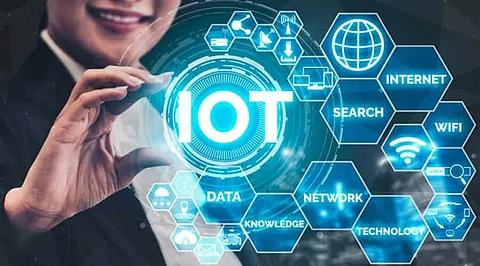

The IoT in Europe is predicted to grow from US$202.3 billion in 2018 to US$357.6 billion in 2023 at a CAGR of 9.6% during the forecast period. The European IoT market is segmented based on infrastructure, vertical, and application. Based on the infrastructure, the market is segmented into a platform, mobile networks and access technologies, cloud solutions/storage and processing, analytics, and security. Based on the vertical, the market is segmented into healthcare, energy, public and services, transportation, retail, individuals, and others (manufacturing). The healthcare segment includes health, pharmaceuticals segment, and biotechnology. Public and services include government, BFSI, others (hospitality and entertainment). transportation segment includes aerospace, automotive, rails and systems, and marine. Further, based on the infrastructure, the market is segmented into a smart home, smart wearable, smart cities, smart grid, IoT industrial internet, IoT connected cars, IoT connected healthcare, and others (toys and drones).
Germany, the United Kingdom, France, Italy, Spain, and the Netherlands are leading European IoT adoption, but Eastern European countries and the Nordics are following closely. Both consumer and business IoT offer opportunities, though specialization may provide a competitive advantage. The home, health, and finance sectors are the front runners in IoT adoption, and the shortage of skilled specialists continues to drive outsourcing.
IoT security solutions are costly, as security adds expense due to longer development times and increased complexity. IoT is primarily used by smart cars to smart manufacturing and connected homes and building automation solutions. This can lead to inefficient data management and reduced interoperability mechanisms. The increase in the risk of malware and phishing threats drives the growth of the cyber security market.
Moreover, during the Covid-19 pandemic, securing smart homes and smart buildings from cybersecurity risks becomes more relevant. People are spending considerable time at home using smart cameras, wearables, and telecommunications, which includes using IoT technology in these devices. With such increasing usage of connected devices during the Covid-19 pandemic, these devices become more susceptible to attacks from threat actors, thereby increasing the demand for IoT security in the region.
Join our WhatsApp Channel to get the latest news, exclusives and videos on WhatsApp
_____________
Disclaimer: Analytics Insight does not provide financial advice or guidance. Also note that the cryptocurrencies mentioned/listed on the website could potentially be scams, i.e. designed to induce you to invest financial resources that may be lost forever and not be recoverable once investments are made. You are responsible for conducting your own research (DYOR) before making any investments. Read more here.
